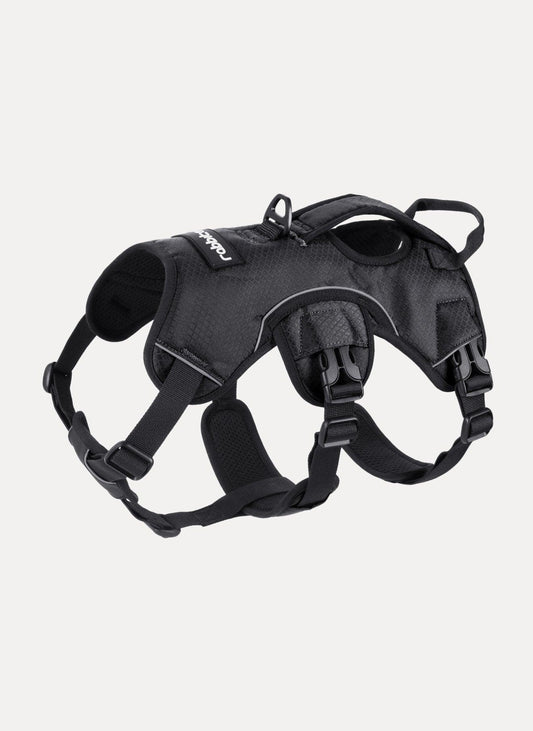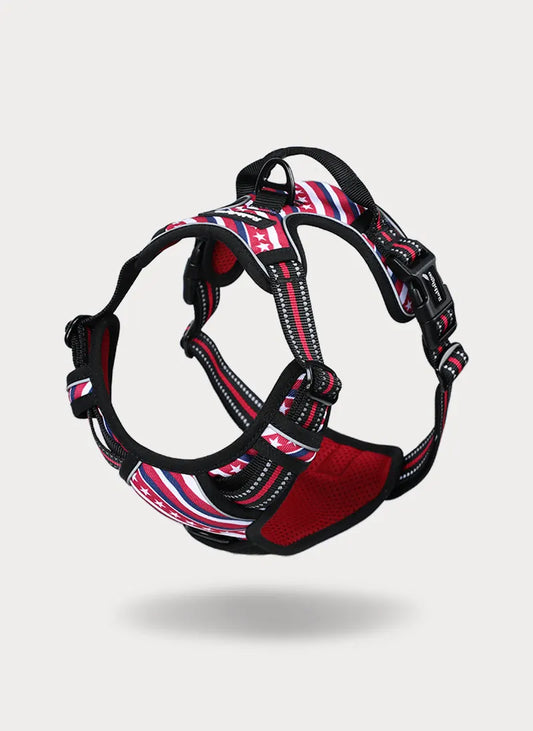Service Dogs: Everything You Want to Know
You have probably heard about service dogs before, but do you know what this term truly means?
Generally speaking, these dogs are trained to aid individuals with disabilities or special needs. In this blog, you’ll learn everything you need to know about service dogs.
About Service Dogs
"A service animal is defined as a dog that has been individually trained to do work or perform tasks for an individual with a disability. The tasks performed by the dog must be directly related to the person's disability."
-According to Americans with Disability Act (ADA)
"A service animal is any animal that is individually trained or able to provide assistance to a person with a disability; or any animal that assists persons with disabilities by providing emotional support."
-According to Air Carrier Access Act (ACAA)
There are so many ways in which service dogs can assist humans. These laws don’t specify the particular dog breeds that can be considered service dogs.
Who is Eligible to Have a Service Dog?
Take a look at the list of disabilities that make you eligible for having a service dog:
- People with Mobility Impairments: They need assistance in opening doors, pushing buttons for elevators, retrieving dropped items, or pulling a wheelchair.
- People with Visual Impairments: They need assistance in identifying obstacles, leading to places like a bus stop or door, or alerts to changes in elevation such as steps.
- People with Hearing Impairments: They need assistance in alerting to sounds such as doorbells, ringing phones, smoke alarms, or when someone calls their name.
- People with Diabetes: They need assistance in detecting high or low blood sugar levels. Service dogs alert the handler before levels become dangerous
- People with Epilepsy and Other Seizure Disorders: Service dogs alert the handler to an impending seizure, seeking assistance by activating a medical alert, and providing physical support during or after a seizure.
- People with Autism Spectrum Disorders: Service dogs provide calming pressure during distress, interrupting repetitive behaviors or self-harming actions, and lead their handler away from stressful situations.
- People with Mental Health Conditions or Post-Traumatic Stress Disorder (PTSD): The service dogs interrupt anxiety attacks or harmful behaviors, provide grounding through physical touch, and create a buffer in crowded or stressful environments.
- People with Allergies: The service dogs detect and alert to the presence of life threatening allergens or other specific triggers.
Different Types of Service Dogs
There are many different types of service dogs, including:
- Hearing dogs
- Mobility dogs
- Seizure alert/response dogs
- Autism dogs
- Psychiatric service dogs
- Therapy dogs
- Guide dogs
- Diabetic alert dogs
Read more on types of service dogs and their amazing jobs
Can My Dog Be a Service Dog?
There is no restriction on dog breed, size, or age for a service dog. While size, breed, stamina, and physical ability differ, these dogs all share one important thing: Their hard work makes all the difference in improving the quality of life for their owners.
- The owner has a disability
- The dog is trained to assist the person
Why does your service dog need a vest?
It is vital that the individuals who use service dogs also alert the public that these dogs are performing their duty. These dogs need to remain focused on their job. Service dogs are recognized in public by their brightly colored service dog vest. RabbitGoo high-quality service dog vests are made to last.
Service dogs are not legally required to wear special identification. However, a service dog in training vest can help distinguish a working service animal from other pets.
What Makes a Great Service Dog?
Regardless of the breed of dog, there are some qualities and characteristics a good Service Dog should possess. These include:
- The dog should be of the right size, with the right amount of strength and stamina to perform the required duties.
- The dog must be physically active as well as calm and peaceful when in public.
- The dog must be smart and a problem solver. They should have some intelligence and obedience.
- The dog must always be well-behaved in public situations. They should not be aggressive, hyper, or snappy in public places.
How to train your dog to be a service dog?
There is no legal requirement for a service dog to be trained by a professional trainer. Any person with a disability has the right to train their own Service Dog, either with or without the help of a trainer.
Wondering how to train your dog to be a service dog (with harness) ?
Training a dog to be a service dog involves several key steps and considerations to ensure they can effectively assist their handler.
- Determine the specific tasks the service dog will be required to perform. These tasks will directly assist the individual with a disability.
- A strong foundation in obedience training is essential. Make efforts to improve your dog's basic obedience skills.
- Now move on to the task-specific training. For example, if the dog is assisting someone with mobility issues, train them to retrieve objects, push an elevator button, or open doors.
- The dog must behave in public. So, teach your dog how to behave in public spaces. This includes being calm, responsive to your cues, and non-disruptive.
- Socialize and expose your dog to various people, environments, animals, and situations. This helps your dog become adaptable and confident.
The training doesn't end once your pup becomes a service dog. Consistent ongoing training is crucial to maintain their skills and ensure they perform their tasks optimally.
Service Dogs vs. Emotional Support Animals: Clarifying the Differences
People often confuse emotional support animals with service dogs. Emotional support animals are companion animals who help people cope with the challenges associated with mental health conditions, like depression and anxiety, by providing comfort with their presence.
Unlike service dogs, emotional support animals are not expected to perform specific tasks related to their owner’s condition. Also, they are not required to adhere to specific training or behavior standards. Here are some differences between service dogs and emotional support dogs:
- Emotional support dogs offer comfort to people suffering from any mental health problem. On the other hand, service dogs perform duties and tasks that their disabled owner can't do.
- Also, service dogs need training based on specific tasks while emotional support dogs do not undergo extensive training like service dogs. They typically receive standard obedience training.
- Emotional assistance dogs cannot travel anywhere with their humans everywhere. On the other hand, service dogs can travel anywhere with their owners. They’re permitted in the cabin with their owner.
- Service dogs are protected under the ADA, and so allowed into public spaces. Emotional support animals are typically allowed only where pets are usually permitted.
Final Thoughts
There are so many ways in which service dogs can improve the quality of life for people with disabilities. Through specialized training, these dogs provide assistance in daily tasks, improve their owner’s independence, and offer emotional support.
When considering a service dog vest, the Rabbitgoo service dog harness with handle is a great choice. It offers useful features designed to improve the comfort of the service dog and the effectiveness of their role.










1 comment
I’ve taught my cat to walk on a leash. I have bought a few different
rands and nothing was close to yours. It is escape proof. The first harness was a perfect size, second same third time still great. I will only buy Rabbitgoo.